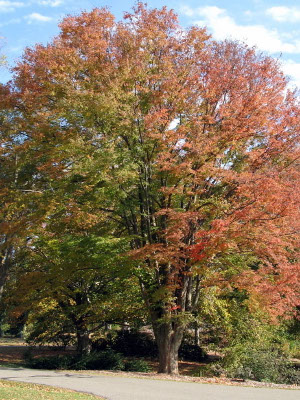Japanese Zelkova Tree
Category: Deciduous Trees

Facts about Japanese Zelkova Tree, "Scientific namr for Japanese Zelkova is Zelkova serrata". The Japanese Zelkova tree, a native to Japan, Taiwan and eastern China, normally resembles the American elm, and it is usually used as a shade and a street tree featured by a rounded crown and v-shaped form. Currently, it is popularly used as an ultimate substitute to the American elm, which is very prone to the Dutch elm disease. Japanese Zelkova Tree is an attractive tree, which is adaptable to various climatic conditions. Featured by a exfoliating bark, showy fall color and a symmetrical rounded shape, Zelkova forms a good garden tree.
Attributes of Japanese Zelkova Tree
Japanese Zelkova Tree has green leaves, which turn yellow, orange, deep red, copper to purplish-red in fall making the Japanese Zelkova Tree is an attractive tree although it may not bring the charm brought by the American elm. The peeling bark exposes orange patches and its graceful vase-shape and elliptical dark green leaves make this plant very impressive. The Japanese Zelkova Tree grow up to 50’ to 80’ high with a 50’ to 75’ spread. It is quite adaptable to various soils with different PH reaching up to 7.5. The Japanese Zelkova Tree showcase fall mix of rust, yellow, dark red, bronze and purple colors. As it ages, its tough grey bark exfoliates naturally to expose the orange shading beneath it.
Conditions for Growth of Japanese Zelkova Tree
The Japanese Zelkova tree can tolerate different soil types including those with extreme alkaline PHs but they prefer moist, well-drained and deep nutrient-rich soils. The Japanese Zelkova Tree grow well in full sunny conditions but they may tolerate mild shades. Established Zelkovas are drought and wind resistant and it has good resistance to elm Japanese beetle and elm leaf beetle. Transplanting should be done in the spring because young plants are susceptible to frost. The Japanese Zelkova Tree do well in climate zone 5 to 8 and they are adaptive to urban pollution.
Care and Maintenance of Japanese Zelkova Tree
They should be pruned in fall for them to develop a strong structure and for the main branches space themselves alternately along the single trunk. Branches should be maintained to ensure they develop a strong form around the trunk.

 Back To Category Deciduous Trees
Back To Category Deciduous Trees